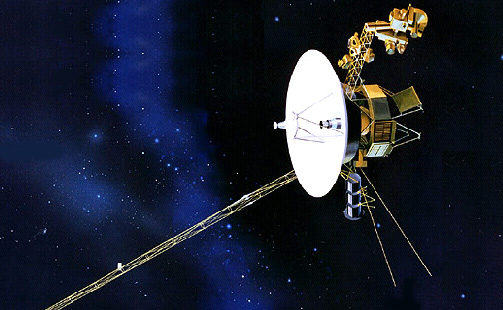Anyone on Twitter today and yesterday may have seen the myriad tweets about Voyager 1 finally leaving the solar system 35 years after its launch. Despite the studies released that confirmed this, scientists in the program said that it can’t be confirmed that it has indeed left.
Voyager 1, along with its sister craft Voyager 2, were launched in 1977 as a way to study the outer planets. While both made flybys of Jupiter and Saturn, Voyager 1’s slingshot through the solar system took it on a trajectory toward interstellar space rather than visiting the other planets. At last measurement in November, the craft had reached a distance of 123 AU from the sun, or about 18.4 billion miles, but even that far out, it’s still under the influence of the heliosphere.

The heliosphere is the “bubble” of charged particles that is cast out into space by solar wind, which is also responsible for the aurorae at the North and South Poles as well as the tails of comets. In 2004, Voyager 1 crossed into the outer layer of this bubble, called the heliosheath. Here, the solar wind drops to just about zero, and the magnetic fields’ intensity increase. However, NASA scientists haven’t seen a change in direction of the magnetic fields, which would indicate that the fields are no longer from the sun but rather from interstellar space.
In case either Voyager spacecraft encountered extraterrestrial life on their excursions, each are equipped with a golden record containing recordings of Earth sounds and pictures, greetings in several languages, and messages from former UN chief Kurt Waldheim and former president Jimmy Carter. It’s unlikely that either will encounter such life forms before they run out of power in 2025 or so, but if that were to happen, it would be a pinnacle to the already prolific careers these two crafts have had.






